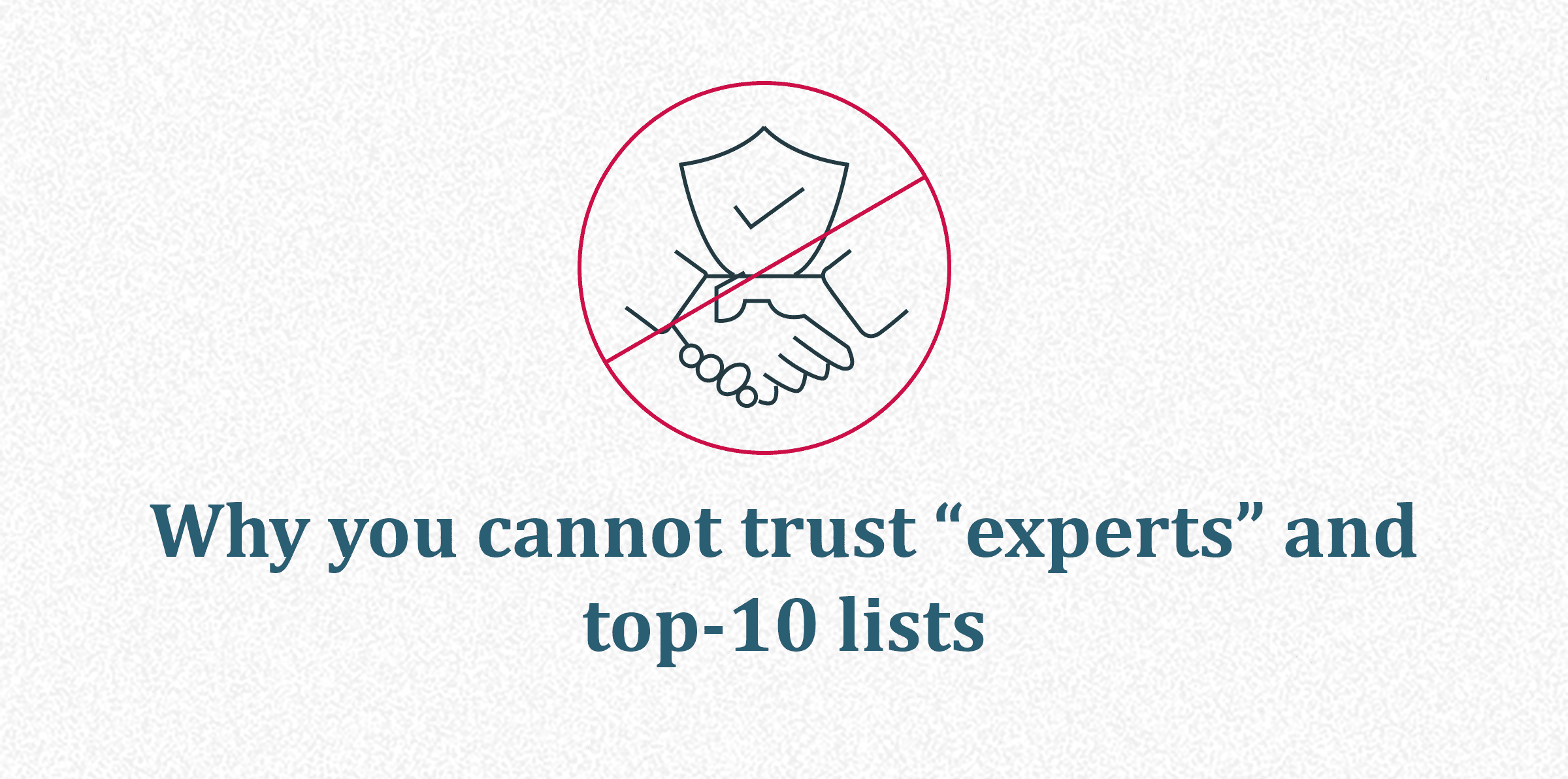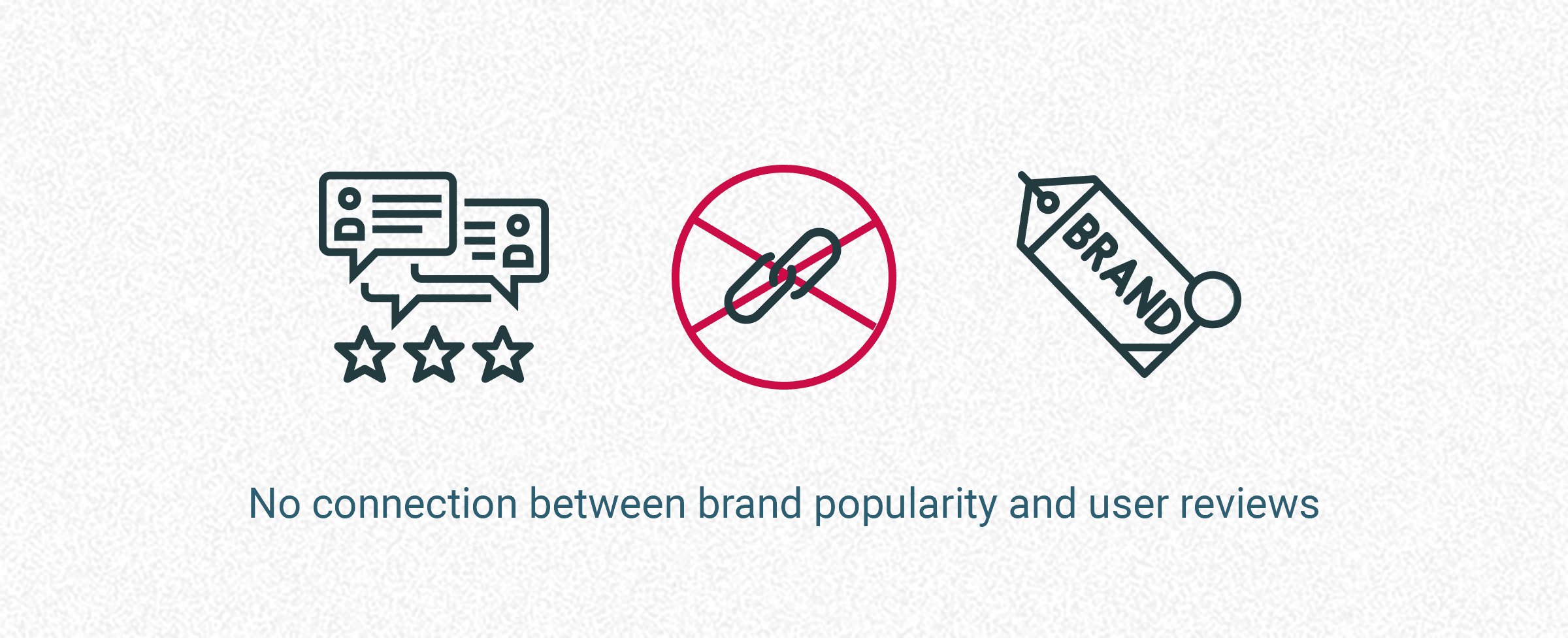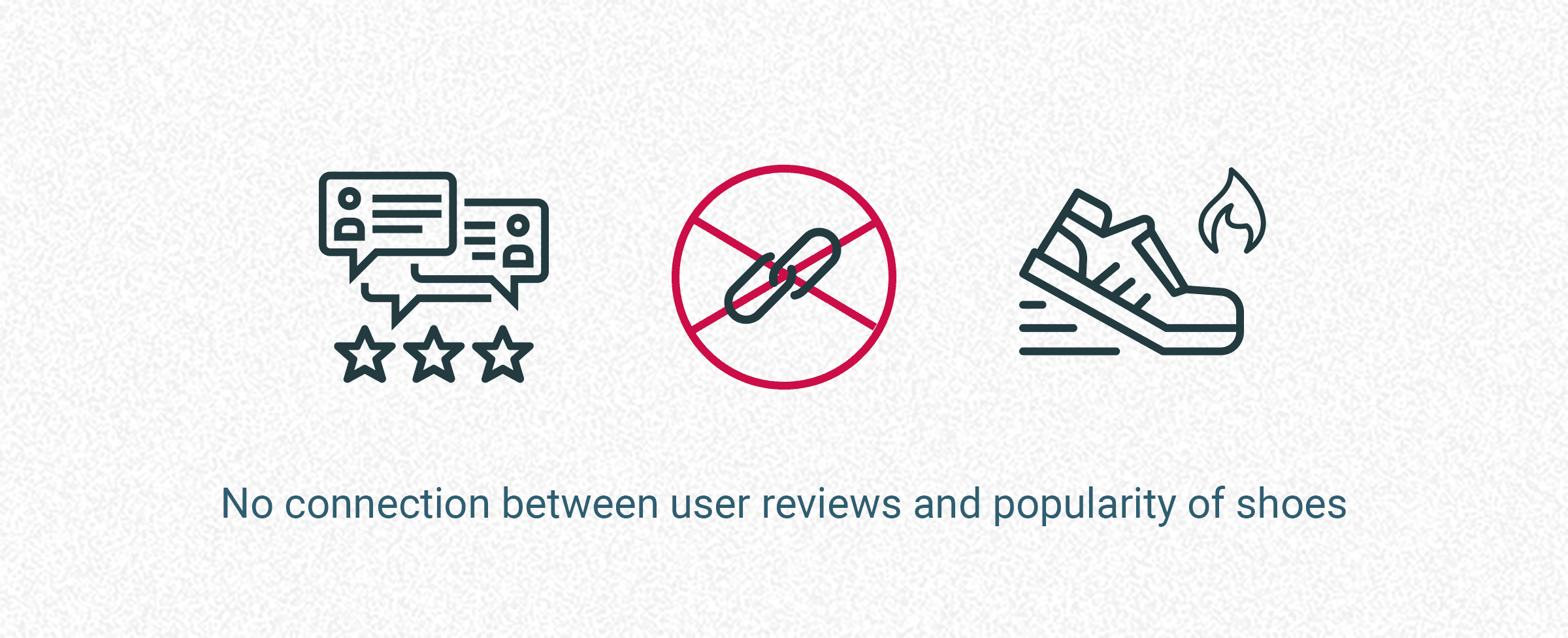Why you cannot trust “experts” and top-10 lists
Tl;dr: We believe editors cherry-pick popular shoes to earn more. You should not trust top-10 lists as the shoes picked are rarely the truly best running shoes.
The purpose is not to discredit review sites. The purpose is for you to be critical when checking top-10 lists, including the ones you see on our site. We are not holy.

Results of our mini-study
We analysed the 10 different top lists found in Google when searching for “best running shoes”. Some lists have 10 shoes, some have more - the total came to 123 shoe-picks.
- We expect that 1.23 of the 123 shoes are among the top 1% most popular shoes.
- In reality, 88 of the 123 shoes are among the top 1% most popular shoes
- In reality, 40 of the 123 shoes are among the top 0.1% most popular shoes.
Which brings us to the fact that there is:
- a 71% probability of a shoe in the top 1% most popular shoes to make it
- a 0.29% probability of being picked if a shoe is among the other 99% of shoes.
The top 1% most popular running shoes are 245 times more likely to be picked in top-10 lists by review sites.
Isn’t it natural that the best products get popular?
If a product is good, you’re likely to recommend it. While this factor does play a role, running shoe sales are mostly driven by promotion/marketing.
If you compare user satisfaction across brands, there’s no indicator that popular brands receive better reviews.

Likewise, there’s no connection between how popular a shoe is and how well received it is by users or experts.

A good product will naturally become slightly more popular, but when considering everything, it plays only a minor role in what defines the popularity of a shoe.
Unfortunately, popularity is predominantly driven by promotion.
How shoes make it to the top-10 lists
When new shoes are released, the marketing team will reach out to bloggers, magazines, personal brands, etc. to see if they can get some promotion of their new launches. We call all of these “media”.
The bigger the media, the more expensive it is for brands to get promotion. Small bloggers get the shoes for “free” in exchange for a review (=read promotion). Major magazines charge thousands of dollars for promoting a product.
Here are (some of) the reasons top-10 lists include most popular models:
- Brands pay for promotions on “best-lists”. There are roughly 34 running shoe brands, yet the 5 most popular brands make up 73% of all “editor picks”. These are the brands with the highest marketing budgets.
- By picking more popular shoes, there’s a greater chance that you’ll click to the retailers to buy the shoes as a) you might be familiar with the shoe or brand name and therefore trust it, b) most often, there are more colorways which makes you more likely to buy and c) when you search on Google there’s a bigger demand for the popular shoes and your earnings-potential is therefore higher.
- In cases where brands do not pay to be included on lists, the brands often decide what shoes they want to send to the experts for free testing. Brands focus on promoting a few models as opposed to their full product lineup.
- “Experts” find it more interesting to review shoes they know will get popular as they’ll get more engagement. At RunRepeat, we have +100 experts who review shoes. When a niche brand comes out with free shoes for testing, it’s hard to have enough experts want to test them. On the other hand, when a new top-model is out, all experts want it.
- Most often, site owners haven't even tested the shoes - they've just found popular shoes and insert links to retailers.
Trusting a specific product review vs er top-10 list
Generally, specific reviews are more trustworthy than top-10 lists. They’re not accurate, but overall more trustworthy.
Keep in mind though, that experts often pick the popular shoes to review. You’re seeing just 5% of the total market of shoes.
Running stores are also biased towards popularity
There are 1286 running shoes on the market now. When you go to a running store, you most often see only 30-50 unique models. These shoes are most likely the best sellers, not the best-rated ones. A store with 40 models represents only 3.1% of the shoe market.
I used to own a running store myself. When we met with the greater brands, they’d always encourage us to pick popular shoes because they would sell better. Like many store owners, I myself picked the popular models as I had to make a living. Also, like many store owners, I picked niche brands that I thought were great, but the vast majority of the shoes were the best sellers.
In defence of experts
If a brand offers you to test [some popular shoe] and only that shoe, why say no? You’d get a shoe for free and maybe even get paid for it.
Why write reviews about less popular products, when no one will search for them on Google. Experts need to run a viable business.
In RunRepeat, we only make a profit of the top 5% most popular products that we write about. The other 95% is a loss. We include all these shoes to give a holistic picture of the market.
